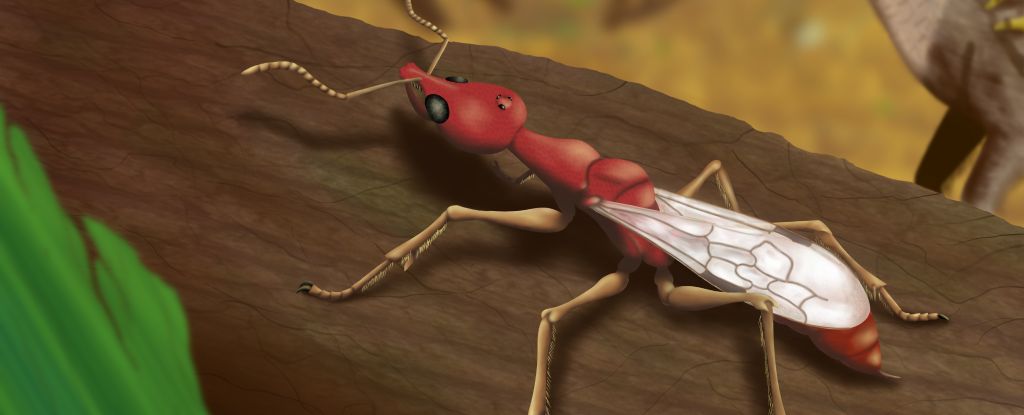113 Million-Year-Old 'Hell Ant' Discovery Is Oldest Ever Found

A bad day and a dead end for a Cretaceous ant has parlayed into some pretty spectacular science some 113 million years later. The tiny insect, fossilized in a chunk of limestone in Brazil, is the oldest known ant specimen ever identified. Even better, it's a member of an extinct subfamily called Haidomyrmecinae – more affectionately known as 'hell ants' – that have vertically articulated, scythe-like mandibles used for spearing and pinning their prey. It's a newly discovered species, and its name is Vulcanidris cratensis. "Our team has discovered a new fossil ant species representing the earliest undisputable geological record of ants," says entomologist Anderson Lepeco of the Museum of Zoology of the University of São Paulo in Brazil. "What makes this discovery particularly interesting is that it belongs to the extinct 'hell ant,' known for their bizarre predatory adaptations. Despite being part of an ancient lineage, this species already displayed highly specialized anatomical features, suggesting unique hunting behaviors." Ants are among the most diverse and abundant animals on the planet today, with over 13,800 species known, of an estimated total of around 22,000. We barely notice them, living out their bustling ant lives, so ubiquitous are they on almost every continent. No living ant, however, resembles the hell ant family. They're notable for their sometimes ornate head architecture, which can involve metal-reinforced spikes, and the alignment of their jaws: up-and-down, rather than side-to-side like all the other ants that are around today. This group is mostly known from specimens preserved in amber from across Europe, Asia, and North America, from between about 80 to 100 million years ago. V. cratensis, by contrast, is a remarkably well-preserved fossil from the Crato Formation Lagerstätte, a type of fossil bed that produces exceptionally detailed fossils. This makes it several firsts. It's the first hell ant known from a rock impression fossil; and it's the first found on the South American continent, suggesting that hell ants were both older and more widely distributed than we knew. The researchers used micro-CT imaging to analyze the fossil, teasing out its anatomical peculiarities from the flattened impression in the Crato Formation limestone. They found, interestingly, that it appeared to be most closely related to the hell ant species Aquilomyrmex huangi from 99 million years ago that was found in Myanmar amber. "While we expected to find hell ant features, we were shocked by the characteristics of its feeding apparatus," Lepeco says. "Finding such an anatomically specialized ant from 113 million years ago challenges our assumptions about how quickly these insects developed complex adaptations. The intricate morphology suggests that even these earliest ants had already evolved sophisticated predatory strategies significantly different from their modern counterparts." Ants are thought to have first emerged sometime between the late Jurassic and early Cretaceous periods, with hell ants potentially representing the first lineage to diverge. The discovery of a hell ant in a new part of the world, much earlier than other species, and with well-established anatomy, gives scientists a new touchstone for understanding the evolution of this diverse, ubiquitous group of insects. "The newly reported species represents the oldest definitive ant known to science and also the most complete evidence for the early evolution of ants in the fossil record," the researchers write in their paper. "Hell ants may have endured for a long time through the angiosperm terrestrial spread during the Cretaceous, before being decisively affected by geological events toward the end of that period." The research has been published in Current Biology.
















